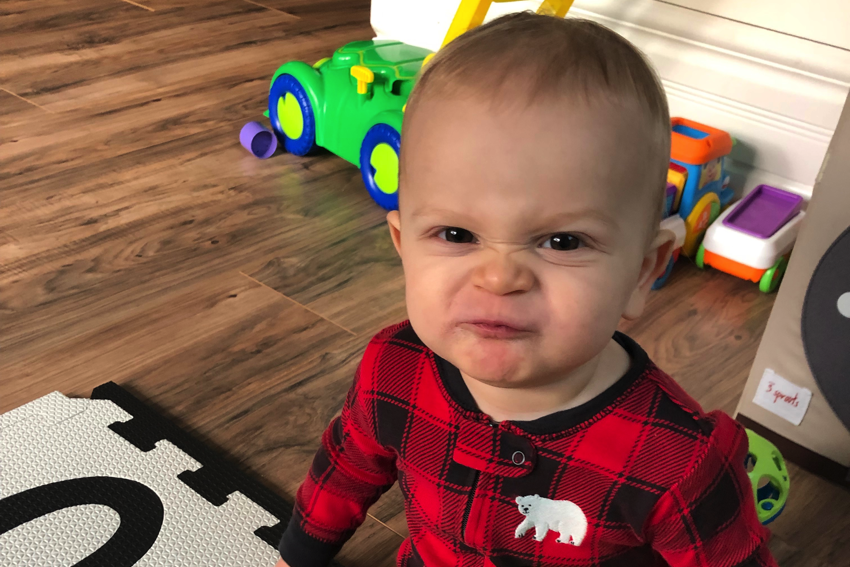No! Promoting the Self-Regulation of Toddlers and Twos


First, let me give you a little background. Before having my first child, I taught and cared for children for well over 10 years. I was a kindergarten teacher, a pre-K teacher, and an infant and toddler teacher. I even taught child development and positive child guidance college courses. By the time my son was born, I knew children and child development theory very well.
As a new parent, I tried to apply all that learning to my parenting practice.
Having been a teacher and caregiver for so many years, I was a pretty relaxed and confident parent. When my son entered his toddler years, he was lovely. He never shouted, “No!” or even said that word at all, for that matter. He didn’t ever disagree with us. If you asked him a question, he’d think about it and give a reasonable response. He only needed to be told a rule once or twice before he would know and follow it without fail.
Okay, so here’s the embarrassing confession:
I honestly thought to myself (thankfully, I never said it out loud), “I must be a really great parent.” Yep—I took credit for his behavior. I thought, “I know children so well, I have managed to raise a reasonable, rule-bound toddler.”
Flash forward four years:
I’m standing in my kitchen with my sweet toddler daughter and I ask, “Do you want blueberries with your snack?” She looks at me, scowls, and shouts, “No!” Ouch. A blow to my early childhood ego! I guess it wasn’t me after all. Here is my second child, standing in my kitchen, displaying the exact same, typical toddler behavior that I have seen so many toddlers exhibit over the years. She likes blueberries. In fact, she loves blueberries. But here she is shouting “No!” and acting like, well, a toddler.
The word “no” is important to many toddlers and twos. Saying (or shouting) “no” helps them learn about their own abilities and their power to impact the world around them—an important aspect of self-regulation.
Clearly, in my son’s case, temperament trumped the typical course of child development. At the time, if I hadn’t been so busy patting myself on the back, I would have easily seen that his need for order, structure, and routine were what made him so rule-bound, not my parenting.
6 Self Regulation Strategies for Toddlers
Here are some suggestions from The Creative Curriculum for Infants, Toddlers & Twos for promoting the self-regulation of toddlers and twos in positive ways:
- Encourage their growing sense of independence. Invite them to participate in daily routines. Organize the environment so children can hang up their coats and reach the sink to wash their hands.
- Give them chances to make choices. Limit the number of options to two or three so children aren’t overwhelmed by choices. Do you want to use the red paper or the white paper first?
- Understand that toddlers and most 2-year-olds are not yet ready to share. This does not mean that they are greedy or mean-spirited. They need time to develop a sense of ownership and will learn first to take turns and then to share.
- Ask toddlers silly questions so they have lots of opportunities to say no. Is it time for nap after breakfast? Is there an elephant in your shoe?
- Acknowledge children’s actions when they demonstrate self-control. That was a safe choice, Leo. You put the block down. You did not throw it.
- Use the word “no” sparingly. If you use it less, they’ll use it less too. Save it for dangerous situations so it will be more effective.
Back to my kitchen and my sweet, but scowling, little toddler who just shouted, “No!” at me.
After I picked my jaw up off of the floor, I reframed the situation and said, “Annalei, let’s put the blueberries on the plate together. I’ll put some on, and you can put some on.” She smiled, dug her little hand into the bowl of blueberries, and happily dropped them onto her plate.
The Creative Curriculum for Infants, Toddlers & Twos is a comprehensive curriculum that offers daily support, guidance, and inspiration to teachers and caregivers of the youngest learners. It consists of The Foundation—three research-based volumes that provide the “what” and “why” of responsive caregiving—and Daily Resources, which offer the important “how” to promote children’s development and learning.